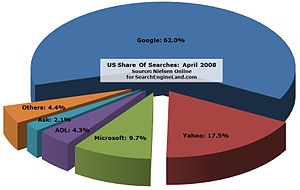The Huffington Post has hired veteran journalists to beef up its news coverage. But a significant chunk of its readers come instead for articles like one published this week: “Chelsy Davy & Prince Harry: So Happy Together?”
The two-sentence article was just a vehicle for a slide show of photographs of the couple and included no actual news. But “Chelsy Davy” was one of the top searches on Google that day, and soon after the article was published it became one of the first links that popped up in Google’s search results.
It was an example of an art and science at which The Huffington Post excels: search engine optimization, or S.E.O. The term covers a wide range of behind-the-scenes tactics for getting search engine users to visit a Web site, like choosing story topics based on popular searches.
Because Google is many Internet users’ front door to the Web, S.E.O. has become an obsession for many Web publishers, and successful ones use the strategies to varying degrees. But as newspapers, magazines, blogs and online-only news sites increasingly compete for readers, they are making it more of a priority than ever and adopting new techniques, like trying to maximize pass-alongs on social networks.
The Huffington Post’s skill at using these tactics to increase readership and revenue was one of the ways it made itself worth $315 million to AOL, which acquired it this week. And Demand Media, which runs sites like eHow andAnswerbag.com and values search engine optimization perhaps more than any other publisher, raised $151 million in a public offering in January.
Models like these could pave the route toward profitable journalism in a postprint world, some analysts say — or, others worry, drive online media to publish low-quality articles that are written to appeal to search engines instead of people.
S.E.O. is “absolutely essential,” said Rich Skrenta, chief executive of the search engine Blekko. Still, he said, it can turn into a “heroin drip” for publishers: “They had this really good content at the beginning, but they realize the more S.E.O. they do, the more money they make, and the pressure really pushes down the quality on their sites.”
There is a whole industry of search engine optimization and social media experts, and many of them have found jobs at Web publishers. Their standard strategies include things like filling articles with keywords that people might search for, writing teaser headlines that people cannot help but click on and including copious links to other stories on the same site.
In addition to writing articles based on trending Google searches, The Huffington Post writes headlines like a popular one this week, “Watch: Christina AguileraTotally Messes Up National Anthem.” It amasses often-searched phrases at the top of articles, like the 18 at the top of the one about Ms. Aguilera, including “Christina Aguilera National Anthem” and “Christina Aguilera Super Bowl.”
As a result of techniques like these, 35 percent of The Huffington Post’s visits in January came from search engines, compared to 20 percent for CNN.com, according to Hitwise, a Web analysis firm.
Mario Ruiz, a spokesman for The Huffington Post, said search engine optimization played a role on the site but declined to discuss how it was used.
Though traditional print journalists might roll their eyes at picking topics based on Google searches, the articles can actually be useful for readers. The problem, analysts say, is when Web sites publish articles just to get clicks, without offering any real payoff for readers.
Related articles
- Huffington Post Attracts New Round of Criticism (webpronews.com)
- Huffington Post and AOL: Dazzling Deal, or Doomed Distraction? (theatlantic.com)









